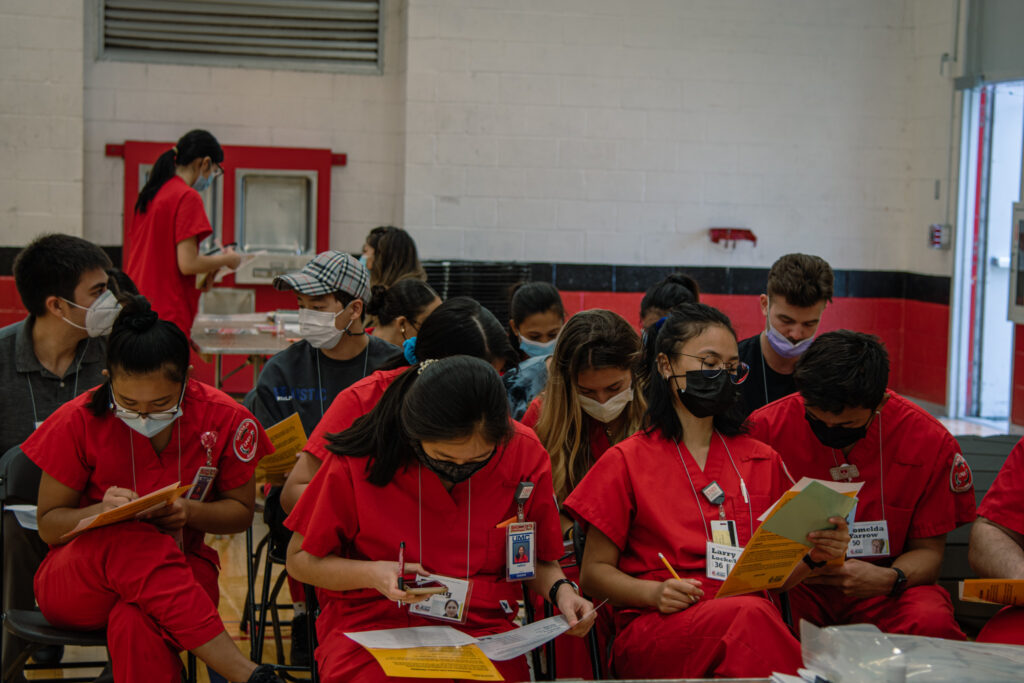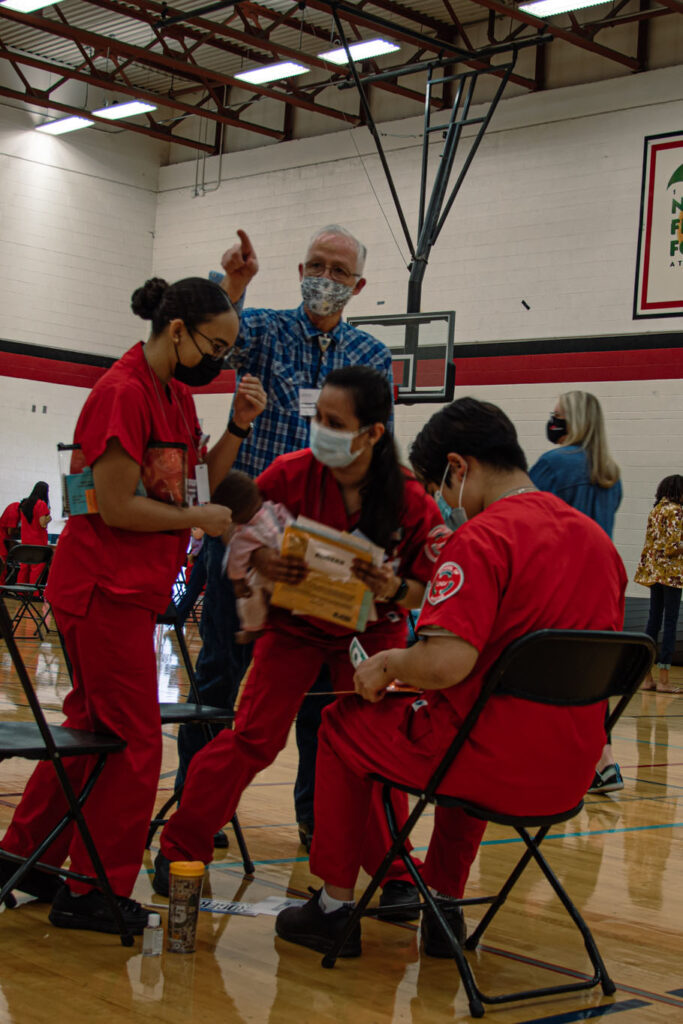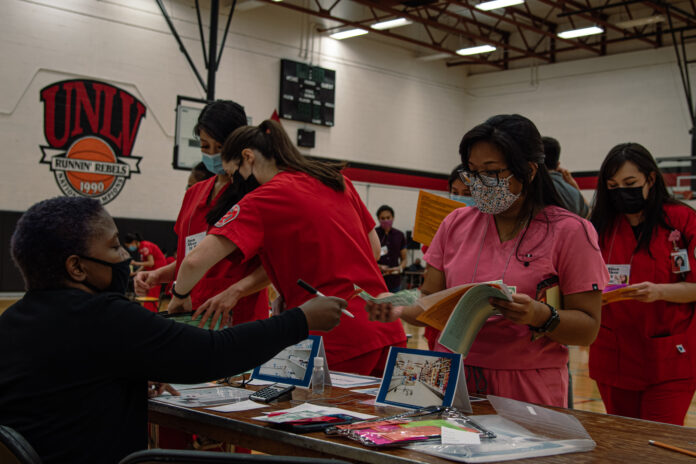Nursing, dental and medical students scramble to stay afloat in simulated lives in UNLV’s poverty simulation to create empathy for the students.
This opportunity offered students a chance to experience living a month in a low-income family. There are four weeks that students have to complete in an hour-long simulation. 15-minutes was equivalent to a week’s time.
In the simulated month, they had to take care of their kids’ school, pay bills from a limited budget, go to work, and make tough decisions throughout the week based on unpredictable circumstances.
“A lot of health professions and students still do come from privileged backgrounds and we want to have our health profession students have the experience of what life might be like for their patients,” Minnie Wood, UNLV nursing director of clinical and community partnerships, said.
The simulation has multiple goals for soon to be healthcare professionals. One is to help students understand that often impacts of patients’ health are often social, called social determinants.

“It’s not your genetics, but it’s the conditions of where you live, work and do your recreations,” Wood said. “We know that income wise, wealth equals health. It’s not an opinion, it’s a fact. Your zip code can determine your lifespan and that shouldn’t be that way.”
When the simulation started, students rushed to school and work. There are resources within the simulation like a community action center, where they can get free resources like vouchers and cash to spend.
Jeanette Rosenbery, a nurse in Southern Nevada, experienced being nearly homelessness, couch suffering with her children and getting her nursing degree. She was blown away at the amount of students that didn’t prioritize food.
“I’ve been there,” Rosenberg explained how she had to stretch every dollar. “I’ve been there. I was a single mom with five kids under 10 years old when I was in nursing school.”
There were a variety of family sizes, ranging from one person to multiple members per household. In total there were 20 families. Members in the family all have specific background details, including four that started the simulation with strokes.
For students that are going to go into the healthcare field, students didn’t visit the healthcare center. Only a couple of students visited the healthcare center until the second half of the month.
Wood was incharge of the healthcare table and demonstrated a list of multiple family members that had to go to the healthcare center to treat their urgent medical complications.
By the third week, families were being evicted from their homes for not paying their rent.
Rocky Rockstraw, director of the Clinical Simulation Center of Las Vegas, was in charge of giving secondary eviction notices and evictions. After families failed to pay rent, he evicted families as students crattled their simulated babies.
Rockstraw pointed out that in the simulation he was illegally evicting families from their homes. This is done in real-life to intimidate families, as many landlords illegally kick a household out without a 30 to 60-day eviction notice. Families should have reported the eviction to the police in the simulations but some students thought they were in the wrong.

“Students can be heard saying that they just got evicted, but they think that they can’t go to the police because they didn’t pay rent,” Rockstraw said.
The pawn shop was heavily populated as families had to pawn away their family heirlooms and wedding rings.
Students would start off telling the pawn shop attendant that they had all these valuables with $200 to $500 value. The pawn shop attendant, Shona Rue, UNLV academic faculty member, knocked down the price to roughly 10 percent of its actual value.
Families who needed some extra cash left with pawning off their valuables for roughly $20.
“Where’s my baby!” was shouted out by a family as they found out their child was left at daycare for a whole week.
After the simulation, the family said they did not have a transportation pass and they ended up not going to get the baby. Nothing else was done to retrieve the child.
A family that didn’t get any food for two weeks, put their circumstance into perspective.
“We didn’t start out with anything,” the family said. “We had to wait until the first paycheck, then cash that and then, well we needed two weeks worth of paychecks to pay the mortgage so that’s why we just did not have any money to pay for the food at that time.”
During the simulation, the family was able to find a pay-check that another family lost. Even with the added income for the week, they were still behind.
“Dad’s in jail,” was heard in the gym, as the police department also monitored families from burglaries and weapon positions at school.
Rosenberg pointed out that she experienced one family ask if they could pay $300 for just ramen noodles, which was a good idea in her eyes.
“That’s kind of like how me and my kids ate, finding the cheapest thing that there was on the shelf, that had a long shelf life,” Rosenberg said.

